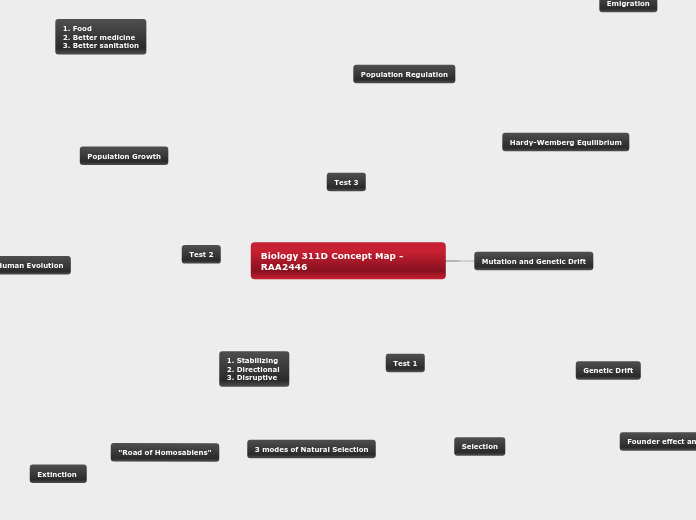Biology 311D Concept Map - RAA2446
Mutation and Genetic Drift
95% Harmful
4% Neutral
1% Beneficial
Cretaceus (65 M Years Ago):
Nearly all dinasaurs went extinct
1. Rate of Reproduction
2. Resistance to Adverse Conditions
3. Defense Mechanisms
Change in gene frequency from one generation to another
Each locus has a different mutation rate
Died out 35,000 Years Ago
Random change in genetic code
Homo Erectus (1M Years Ago)
3 modes of Natural Selection
Hardy-Wemberg Equilibrium
Density Dependent mortality
1. Insufficient Food, Water, & Nutrients
2. Disease
3. Predation
4. Competition
5. Insufficient living space
6. Adverse weather conditions
Founder effect and bottle neck effect
Homo Sapien (350,000 Years Ago)
Ardiditicus (5 M Years Ago)
Homo Habilus (2M-1.8 M Years Ago)
1. Stabilizing
2. Directional
3. Disruptive
Factors:
Hiertability and Selection Differential
1. Habitat destruction
2. Hunting
3. Species introduction
4. Disease
5. Hydridzation
1. Food
2. Better medicine
3. Better sanitation
Exponential Growth (R-Curve)
Primates Evolved (60M Years Ago)
Random change in gene frequency
from one generation to another
Logistic Growth (S-Curve)
Insufficient biological resources
Factors that control population growth
Always dependent on phenotype
